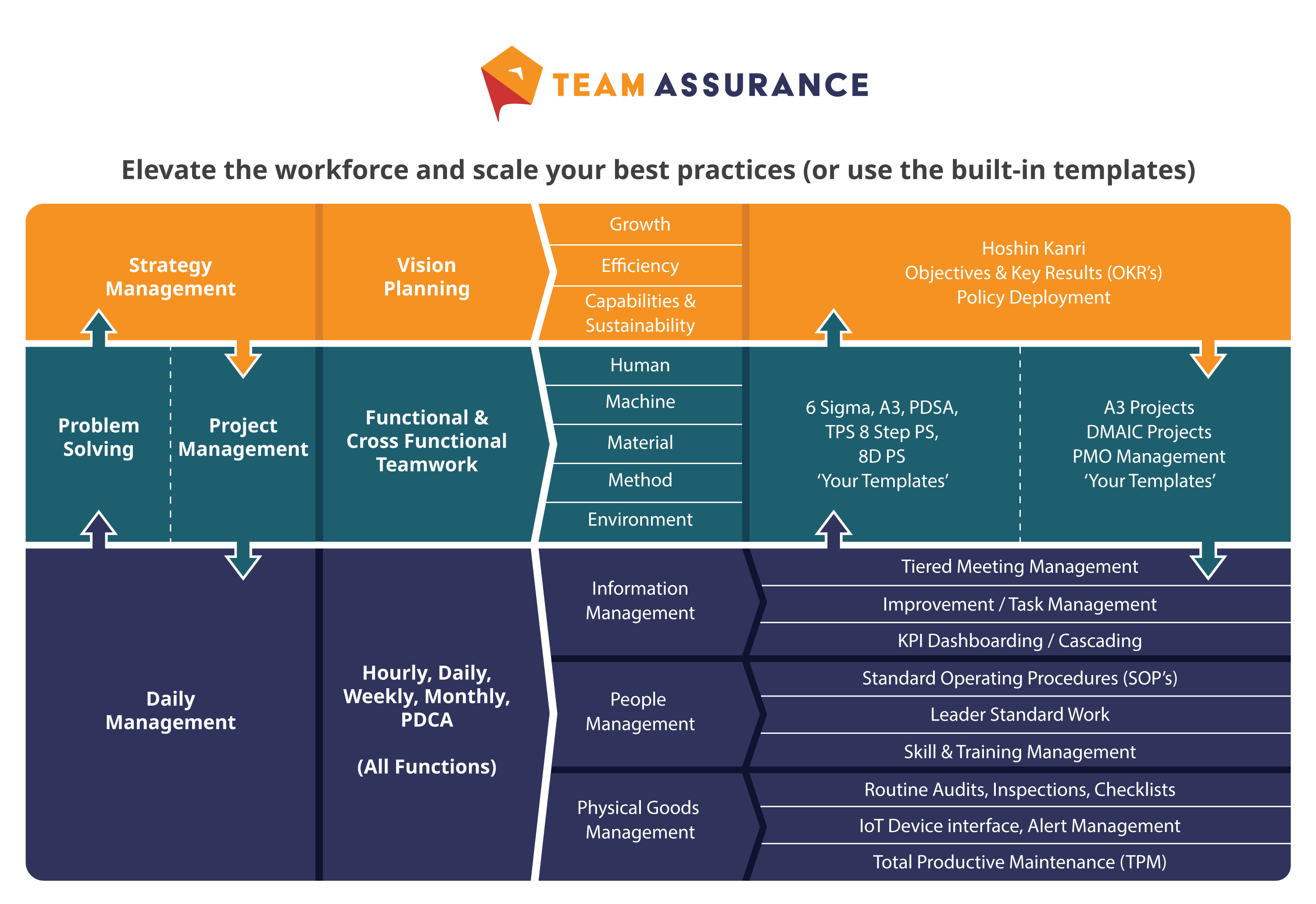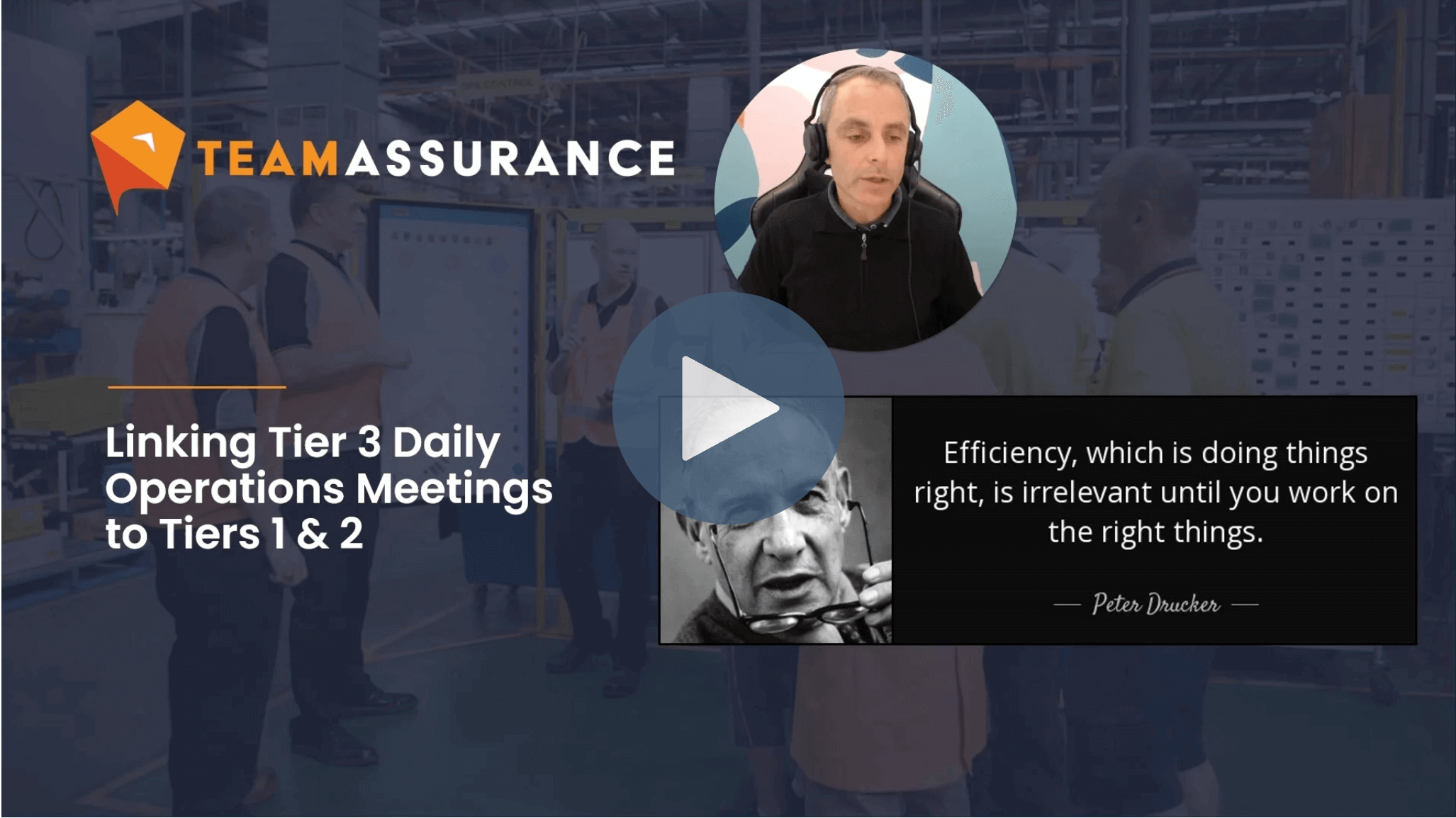In this article Paul Dunlop discusses how to make meaningful improvement conversations easy and accessible for everyone.
Organisations often speak about building a culture of learning and improvement in earnest. However, a question that is often overlooked is, “how easy do we make it for our people?”
In my experience there are 3 key areas we must address to enable real connection, nourish a CI culture, and stimulate meaningful conversations within our teams. These elements are:
- Communication
- Share of Voice
- Performance Management
So let’s briefly dive in and take a look at where we should focus in each area in order to spark these conversations.
1) Meaningful Improvement Conversations Start With Letting Communication Flow
Organisations should prioritise letting information flow through the organisation vertically and horizontally. Breaking down silos and having the information in the right place, at the right time, in front of the right people happens by creating a user-friendly, inclusive, and visual workplace.
We must make focused efforts every day to refine the way we communicate with each other and present information. In this environment collaborative problem-solving becomes the norm; activity accelerates and workloads are evenly spread. Below is a prime example of this in action – see how the implementation of 5S in a workshop is supported by multiple teams and departments:
Establishing a tiered daily management process is the first step in unblocking bottlenecks and eliminating siloes. This is because we inherently create rapid feedback loops (daily meetings) that allow us to iterate on our systems and processes.
Communication blockages can be identified and rectified, visual information can be refined for optimal comprehension, and our meeting agendas can be streamlined so we focus less on ‘meeting management’ and more on actual execution of work.
2) Including All Voices in Our Improvement Conversations
Inclusion and engagement is fosters by creating a psychologically safe place where people are cared for and respected.
In such environments people are much more likely to be candid and speak up; they know that their thoughts and ideas are truly being heard.
It is up to supervisors and managers to demonstrate supportive, curious leadership that encourages staff to contribute.
In combination with systems to record action items (and their owners), stakeholders can achieve peace-of-mind that real action will be taken and feedback will be provided.
With TeamAssurance every single staff member can be included in the conversation regardless of their tech-savviness or native language.
Everybody can contribute to improvement in real-time with ‘household’ technology already at their fingertips. Here it is in action:
3) Managing Performance & Motivations
Standards of performance and behaviour should be made clear and upheld through accountability mechanisms. Leaders in the business need to provide support and coaching, ensuring their employees have clarity of their role and responsibilities. This is only achieved through regular, good quality feedback and guidance. A guiding question all managers / supervisors should ask themselves is, ‘do our people know what a ‘good day‘ looks like?’
Further more if you are striving to be a values-driven organisation – those values need to be internalised. Setting clear expectations, and providing reward / recognition when these are met or surpassed, is critical in effective performance management.
Facilitating Meaningful Improvement Conversations
To actualise these points it is important that we lower barriers to entry. This particularly important at the frontlines. We need this Tier to engage and participate meaningfully in our continuous improvement efforts.
To do so we must do the following:
- Create a visual workplace where the standards and expectations are clear and simple to understand.
- Conduct Daily huddles to communicate openly with our teams and seek feedback from them.
- Provide people with time and resources to work on their problems.
- Engaging individuals with deep respect regarding the efficacy of their role and functions.
- Provide people with access to technology such as email accounts, hardware and or software that facilitates quick, easy and effective engagement.
- Creating a culture that is psychologically safe and encourages learning, new ideas and experimentation.
- Provide good quality training and support to set people up for success and develop deep insight and knowledge of their process.
- Making improvement activity something for everyone – not just the “experts” and bosses.
- Structures that facilitate two way communication vertically and horizontally
Daily Management Ties It Together
The rubber really hits the road for meaningful improvement conversations through our Daily Management Systems (DMS) and structures. Meaningful conversations are where curiosity and learning are placed at a premium around the interrogation of the process performance.
Pact Group, a large scale packaging manufacturer, recently shared how implementing a DMS helped them make great gains the three key areas above and more:
Connecting individuals and teams around a set of shared goals and objectives in a psychologically safe and supportive environment creates a catalyst for genuine improvement discussion and ideation.
When combined with the right tools such as TeamAssurance this creates an environment where there is clarity of purpose, meaning and people come together and make real improvements each day, every day.
Engaging Teams Requires a Focus on the Whole C.I. Framework
Providing autonomy and giving a voice to all of our people requires systems that support decision making at every level. These must supported by the right data and, at all times, be aligned to strategy. In this way we can support efforts towards individual Mastery by providing access to the right training & information our employees need to better themselves and contribute to improvement.
The illustration below shows how we designed an interconnected platform which achieves these goals. One that avoids disconnected ‘Point solutions’ (digital or analog) that do not help sustain either lasting business performance, employee motivation, or a ‘no blame’ culture.
 If you’re a business in need (or a consultant with clients in need), and would like to explore how digital-aids to Lean tools facilitate a culture of improvement, Book a demonstration today
If you’re a business in need (or a consultant with clients in need), and would like to explore how digital-aids to Lean tools facilitate a culture of improvement, Book a demonstration today






